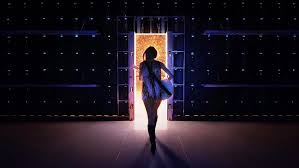The Count of Monte-Cristo 2024 Movie Review
It’s hard not to notice that modern adaptations of classical works often tend to sacrifice depth and complexity for the sake of fast pace and entertainment. As a result, the special atmosphere and emotional depth inherent in the original texts are often lost. “The Count of Monte Cristo” by Alexandre Dumas is not just a twisted story of revenge with many bright twists, it is a reflection on life and how a person is transformed by circumstances and his own decisions. Alas, the new film adaptation, and this, of course, in my opinion, coped with the task of conveying this transformation – satisfactorily, but no more, leaving the characters at a simple and understandable level of archetypes.
Expectations did not come from an empty place, because many people read this fascinating tragedy of revenge and had hopes to see the development and deepening of the characters on a par with the original source. At the same time, the audience was offered a set of events that take place too quickly, as if on a high-speed cinema highway. Deep emotions, nuances of character, dramatic internal conflicts – all this was clearly not enough. But it is these details that make the work alive and truly memorable. Yes, undoubtedly, a thousand pages of a novel cannot be transferred into one film, but this is the power of creativity – the ability to revive images and give the viewer empathy. In the film, all this is there, but dosed, within the framework of the standard form of monosyllabic presentation.
The film is not bad, but spoiling Dumas means being completely incompetent, and, to my joy, I can’t blame anyone for that. But I expected more and I’m a little disappointed. The whole film was shot with a 24 mm wide-angle lens, and it was unnecessary: there are clearly not enough close-ups, especially when the actors play well. Despite the decent acting, the characters seem to be unsaid and aimless, reduced to simplified and stripped-down images.
During the viewing, I hoped to see a philosophical reassessment or depth of thought in the scene with “Abbé Faria”, but, unfortunately, only the Soviet painting by Georgy Jungwald-Khilkevich with Alexei Petrenko as the abbot was able to prepare the viewer, lay the foundation for the climax, making them realize the suffering of the prisoners and catch the main question: “What are you up to Will you spend your life, for revenge or for good?”. After this episode, it became clear that the story would quickly sweep through the pages of the fireproof manuscript, and so it turned out.
The connection with the epoch and with the literary echoes of the past, which give the original its special flavor and indescribable integrity, has disappeared. Perhaps this is a sign of the times. Modern technology allows you to create impressive visual effects, but no technique can replace the power of a story, the ability to convey a mood and invite the viewer into a deep understanding of life. One thing is for sure: trying to adapt classics is always a challenge that requires incredible skill and understanding of the text. This is a difficult task, and, alas, not everyone can overcome this path, but the task was done well, although there was a residue of disappointment.




